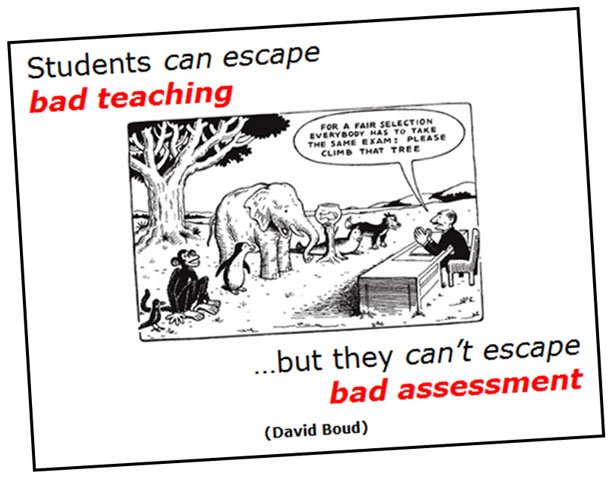How Are Assignments Used As Assessment Tools In Your University

Being a tutor does not put one in a comfort zone to just take tests and give assignments. There a lot of pain that they take to create the assignments. Read through, that you can cheer that you are safe on the other side. Also, be sure that you now would understand the mind of your tutor when reading your assignment, the next time.
Introduction
“Assignments” form a crucial part among the other assessment tools used by universities to measure progress and capabilities of a student. When taking of assignment, the assessment criteria is based on creation of a marking rubric either for individual or group assessment. The criteria is so finely prepared, that even subjective assignments can be used to mark a candidate quantitatively and specifically. Also, assessor being different does not impact the difference in marking much, as all of the assessors use the same rubric.
Not just the rubric every section and instruction specified in an assignment needs quite an understanding of the thumb rules of creating an assignment and also deep knowledge in the area the assignment is being created.
Understanding How Exactly Assignment Is Created
Creating an assignment is a challenge for a university. To correctly design it, so that students can be assessed properly, be it any tutor checking the assignment, all students are marked under same guidelines and marking criteria.
The steps that lead to creation of an assignment include-
- Deciding the expected outcome and goal of the course.
- Specify the learning objective crystal clear.
- Choosing the type of assignment- Based on curriculum and learning outcome the choice on the type of assignment is made.
- Try making the question interesting and challenging
- Looking at a futuristic aspect, as to which cognitive level skill do I expect my students to use when doing the assignment.
- Assessing among the choice of what I as a tutor expect to check among my students. Is it writing capability, presentation skills, team performance, content based understanding as well as cognitive development and accordingly prioritizing the assignment criteria.
- Checking question feasibility against the course content.
- Specify sectional word count and marks distribution.
- Highlight the “very important” points, which if neglected can lead to a “wrong”
- Finally creating the assignment evaluating criteria by means of developing the marking rubric.
Let the student brainstorm
Creating a rubric is among the most complex task that a tutor has to undergo when creating an assignment as a tool which is applicable to all types of assessments assigned to students as part of a course in the University.
Marking rubrics is of two types:
- Custom Rubric– Created specifically for independent assignments.
- Standard Rubric– Common rubric used for all assignments. Designed usually with common criteria’s that are not assignment specific.
The marking rubric details and all major parameters clearly explained. Also, parameters should be elucidated for all grades mentioned by grading criteria for Australian universities.
Based on created rubrics, the general Australian grading criteria is seen to be adhered to.
Let’s have a quick look at a few Do’s and Don’ts
Do’s
- Add in guidelines who is the audience.
- Present clearly the thinking domain the tutor is trying to assess for a student by doing the assignment.
- Use of open ended questions should be preferred, as that would help understand how well brainstorming is done by student.
- Guide students with links and lectures that pertain to the assignment and would help in its completion.
- Provide students with tutor created models that would help and guide students to plan assignment solution.
- Specify the audience as well as detailed marking criteria.
- Mention clear aim and objective of the assignment.
- Give a broader structure outline so that it can be used to guide students and help avoid blunders.
- Mention formatting guidelines.
- Specify referencing style. Add hyperlinks to correct referencing style guide pages for reference.
All students are marked under same guidelines and marking criteria
Don’ts
- Avoid giving a closed end question as it limits a student’s mind and understanding.
- Avoid giving too much to be written under a limited word count.
- Don’t overburden the candidate with guidelines so that main concentration shifts from main assignment task to guidelines abidance.
- Do not specify any ideal answer or direction that would be required to answer the question in assignment. Let the student brainstorm.
A student feels it is tough to answer, and how simple it is to set up a question or assignment. But keeping oneself in a tutor’s shoe can well put you in a dilemma to decide which side of the table is safer and comfortable.
After what we have described above, that elucidates all concerns and considerations a tutor needs to frame an assignment, very quickly I would answer that “I would always like to be a student than a tutor”.
Hope you now know what and why every sentence exists in your assignment details.
Best of Luck
Have a “Happy Assignment Writing”!!





